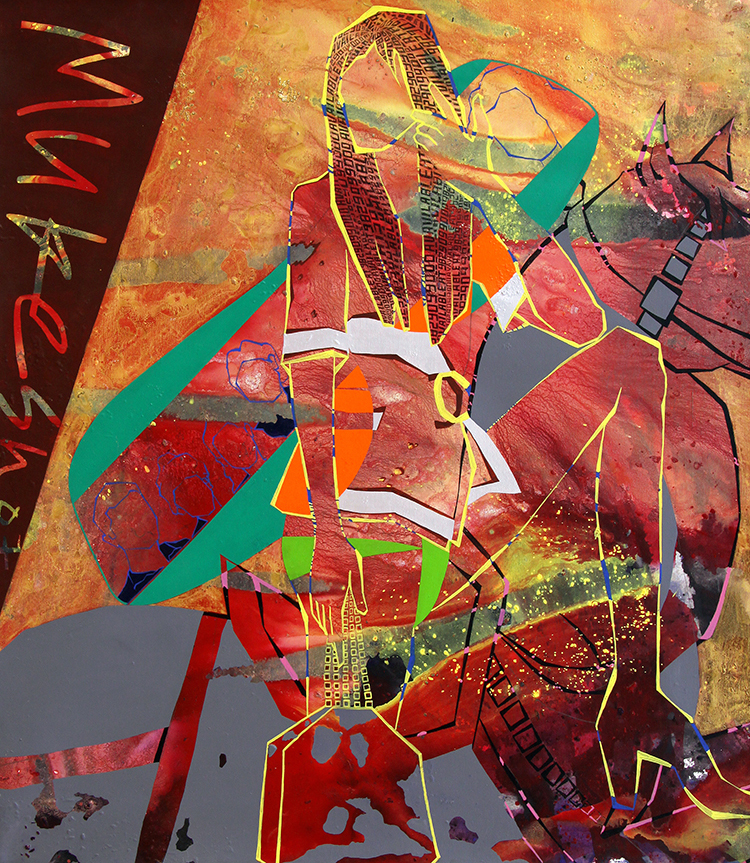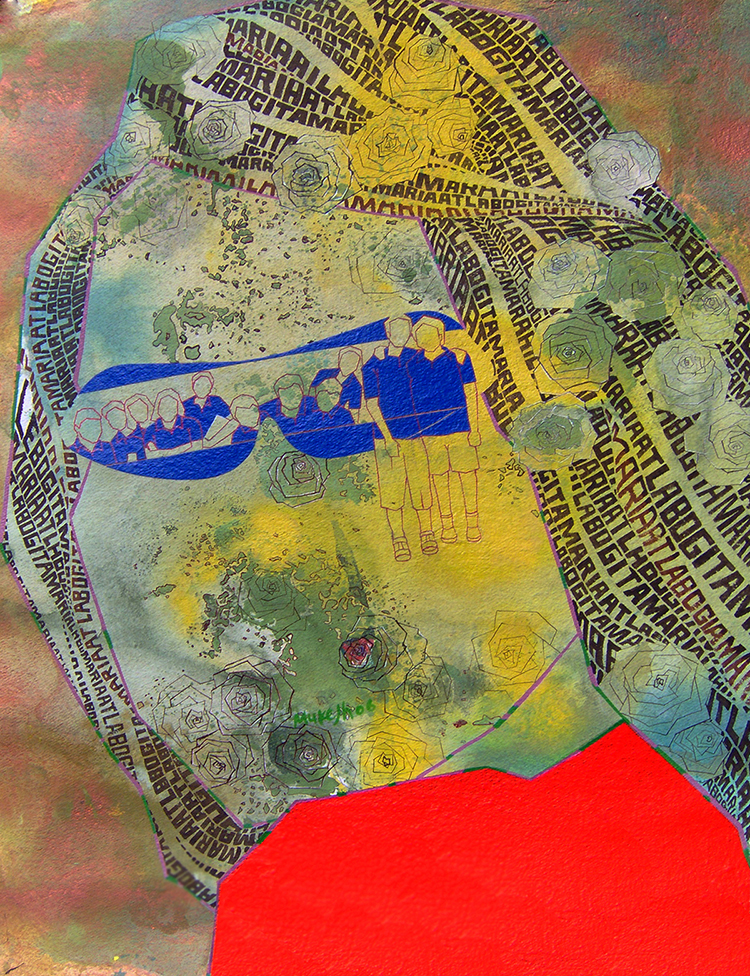Dr. Alka Pande, Curator
April 2007
Exhibition: Another Geography at Visual Art Gallery, India Habitat Centre, New Delhi, India
“Travel is fatal to prejudice, bigotry, and narrow-mindedness, and many of our people need it sorely on these accounts. Broad, wholesome, charitable view of men and things cannot be acquired by vegetating in one little corner of the earth all one’s lifetime.” Mark Twain, The Innocents Abroad (1869)
Mukesh Sharma explores the diachronic issue of displacement within human geographies in one or many culture, within gender, within the self. From Jaipur to Mexico, across the great borders of cross culture landscapes, Mukesh Sharma’s paintings continue a dialogue within a socio-political context that addresses liminal spaces. His paintings foreground the notion that the traveller is in a state of ‘in-between’, an idea which finds its voice also in the virtual world.
The Paintings signify a process that begins with the “exodus’’ from one place to another condition either willingly or unwillingly, physically or spiritually.
Displacement, the cultural construction of personhood in social stratification, comfort, conformation and confinement are some of the subject matters that Mukesh wishes to bring about in his work.
He places his practice at the heart of the main issue of contemporary culture through a critical trajectory. He uses his knowledge of art against all odds – as an instrument of cultural survival.
The Vibrancy of colors are symptomatic of the land he lives in and the paintings are a doppelganger of his cultural background. In the art works is the duality of the received tradition and the encountered tradition. He uses the language of the popular to inform the viewer of social consciousness of the terrain he walks upon.
Mukesh’s compositions are crowded with people, yet there seems to be no one in them. The works are figurative and focus on the negotiation between representation and abstraction. Both culturally and geographically, he blends the vocabularies of art from his journey in India, Australia and Mexico.
All of his works are made in direct relationship to the spatial qualities of the ground they are painted on. Each artwork has resulted from the ongoing investigations into how personal and cultural meanings are formed and expressed. He has strong interest in counter-cultures and the way they are visually represented. From the political to the recreational the painting becomes the signifier of self-determination and a development of aesthetics in tune with the aspirational. The Landscape paintings with varied styles, with human, tourist memorabilia, symbols of materials an artificial culture wrestle with each other, infusing a rare vitality into the large acrylic canvases.
He does not consider painting in term of representing the object world or social values. However his attempt though his art is also to be part of nature not imitating it, but stimulating it. He believes that painting should be pure, since it has its own life autonomous and not an illustration. Across the geographical boundaries, Mukesh strongly believes in sensing a similarity in the difference, seeing the way things may fit together, work in harmony or contribute towards building a dialogue.






